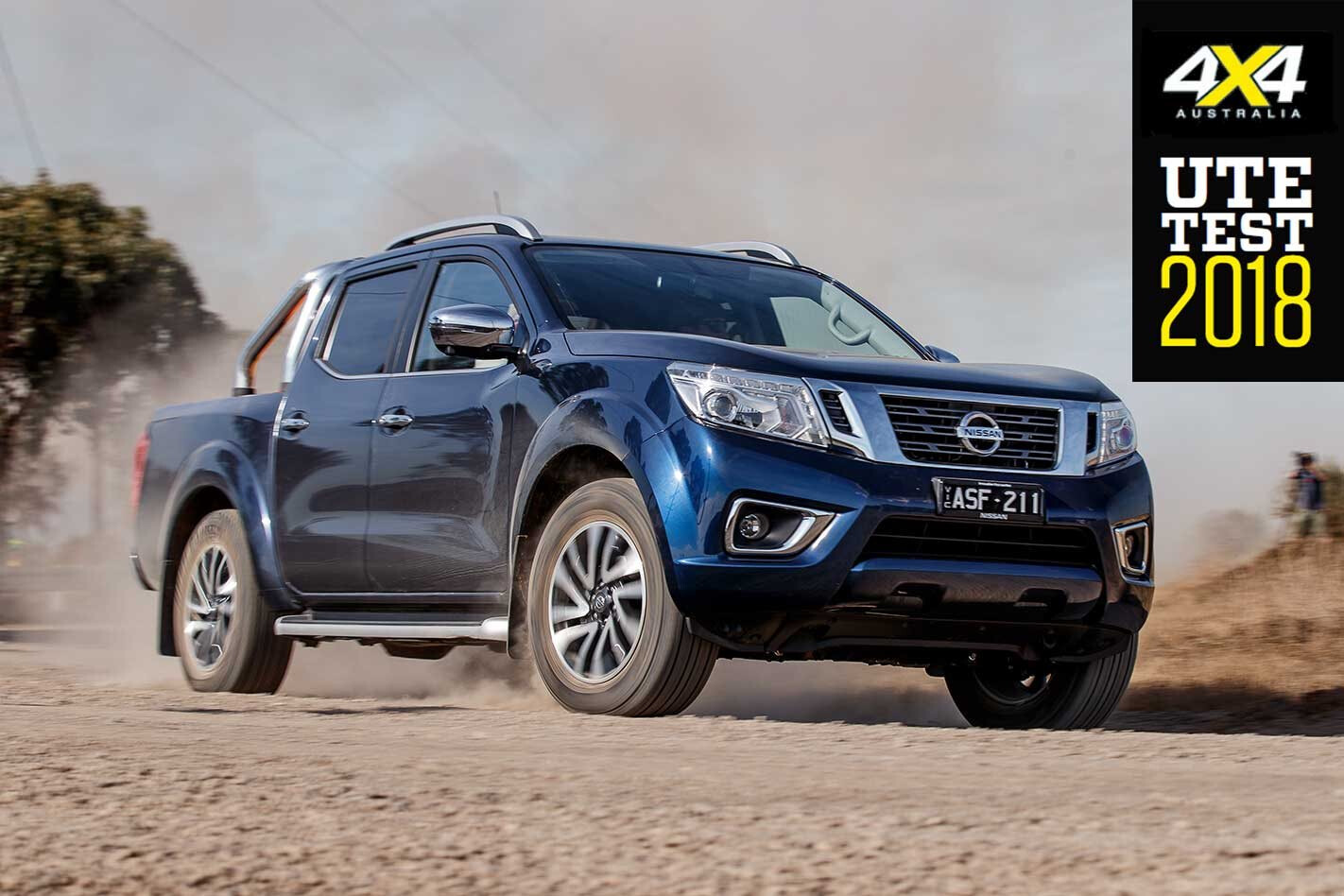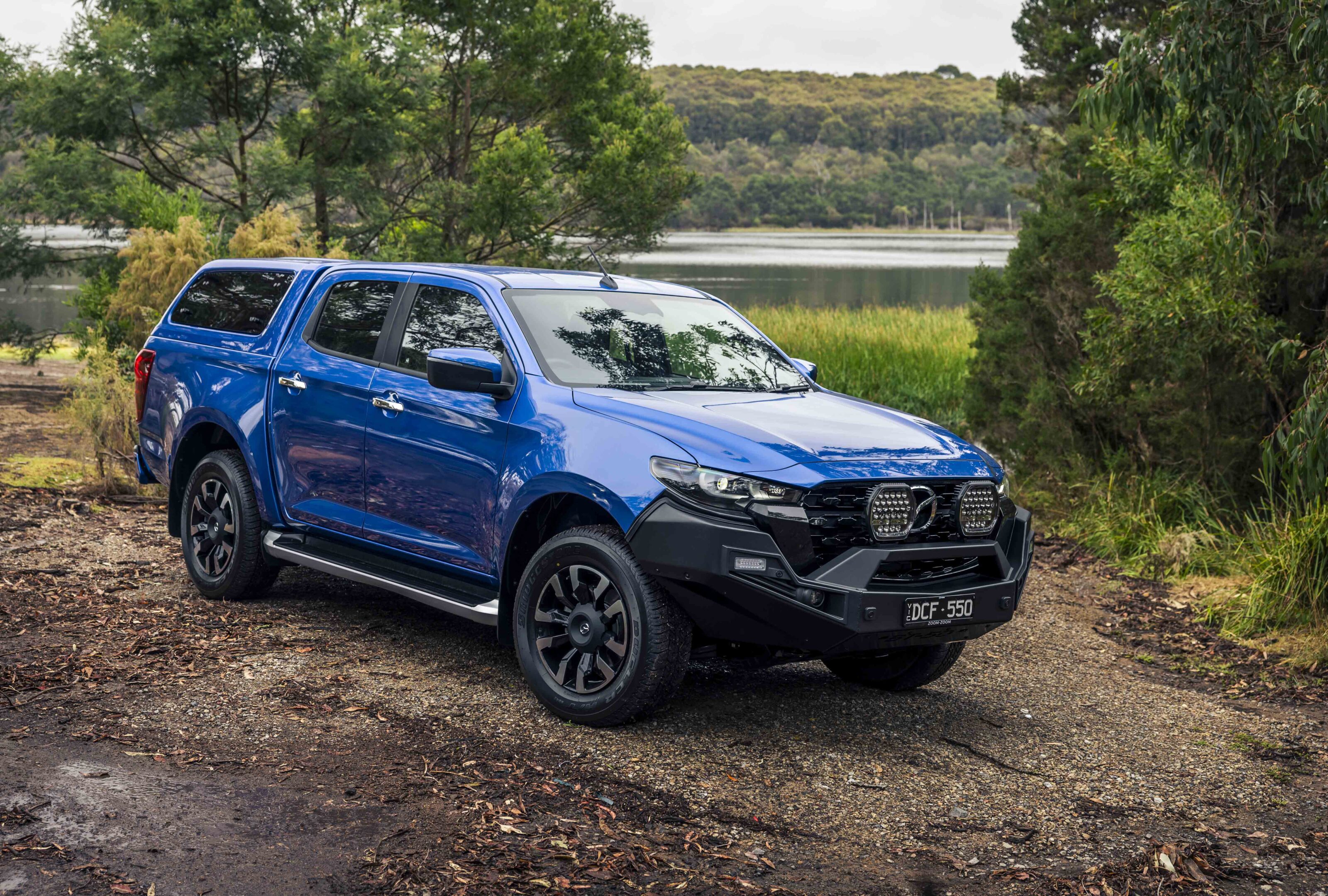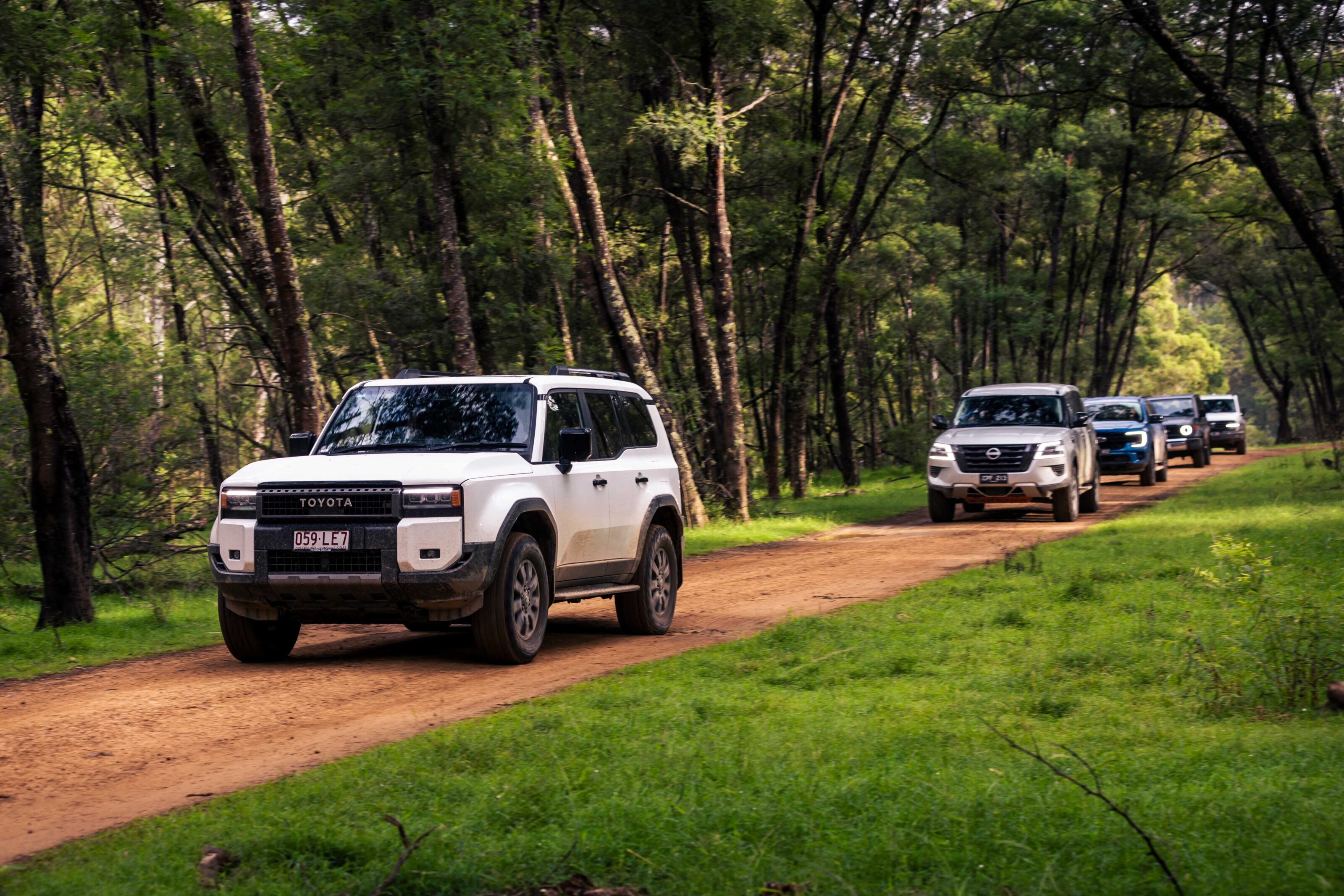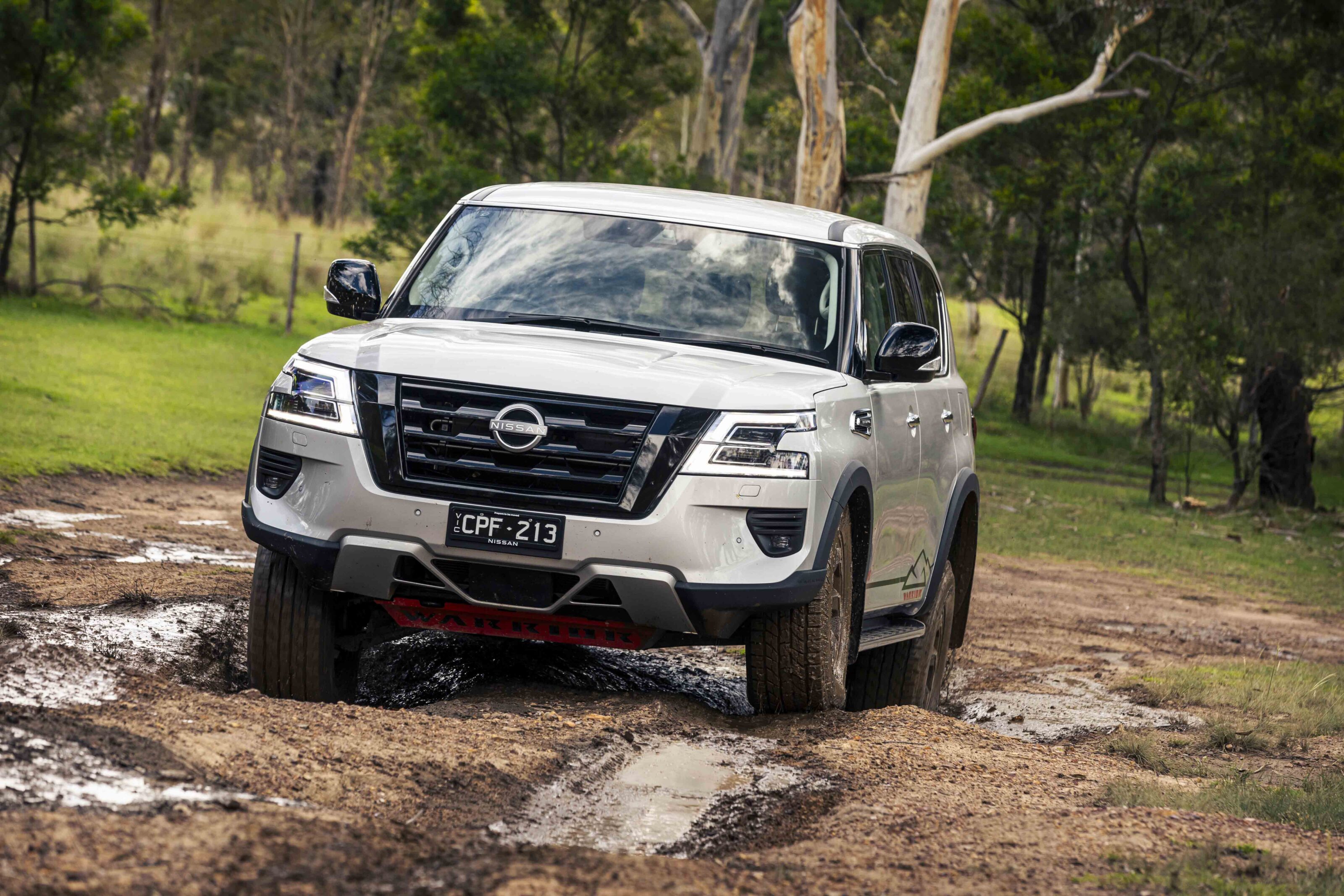THE Navara D23, tagged as the NP300, arrived in mid-2015 and was a significant departure from the outgoing and successful D40, which had been on sale for the better part of the decade. All but one dual-cab D23 featured a coil-sprung live axle at the rear, a feature unique among the mainstream utes in this class.
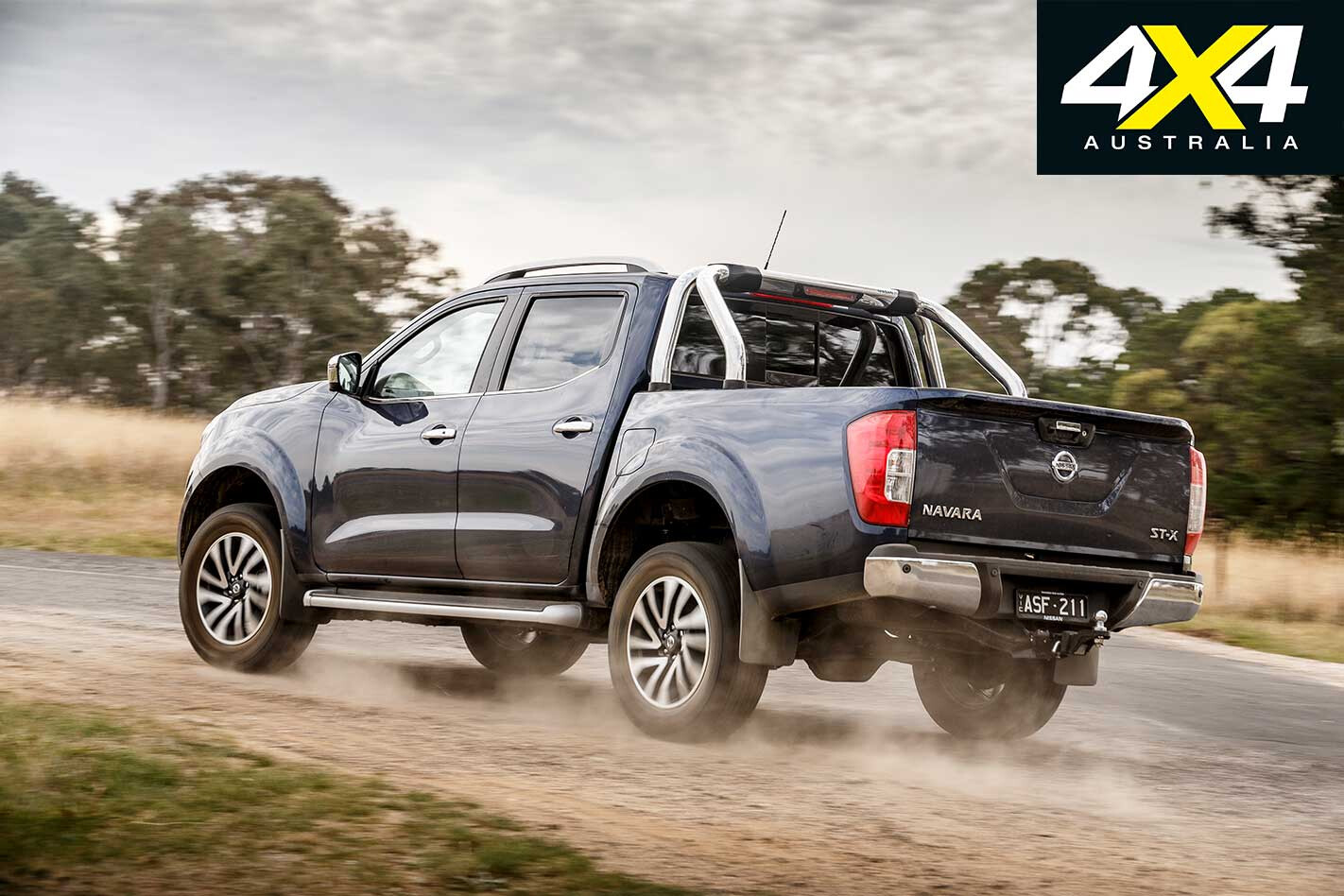
In what Nissan said was response to “feedback from customers and dealers”, changes were announced a little more than a year later in October 2016 and implemented for the 2017 model year. This included the dropping of the NP300 tag (replaced by Series II), the introduction of a new work-spec model and, critically, new coil springs at the rear and new dampers front and rear.
Then, early this year, the suspension was revised again with new coils and new dampers at the back, a new steering rack ratio, and various equipment upgrades.
WHAT YOU GET

ALL Navara dual-cab 4x4s have seven airbags, tilt-and-reach steering wheel adjustment, a rear-view camera and a 12-Volt outlet in the rear tub. The SL then adds LED headlights with DRLs, while the ST gains 16-inch alloys, a seven-inch touchscreen, sat-nav, fogs, side steps, a chrome ‘sports bar’, and a rear locker.
The top-specification ST-X model then gains leather seats (heated up front), electric adjustment for driver’s seat, and adjustable tie-downs.
POWERTRAIN AND PERFORMANCE
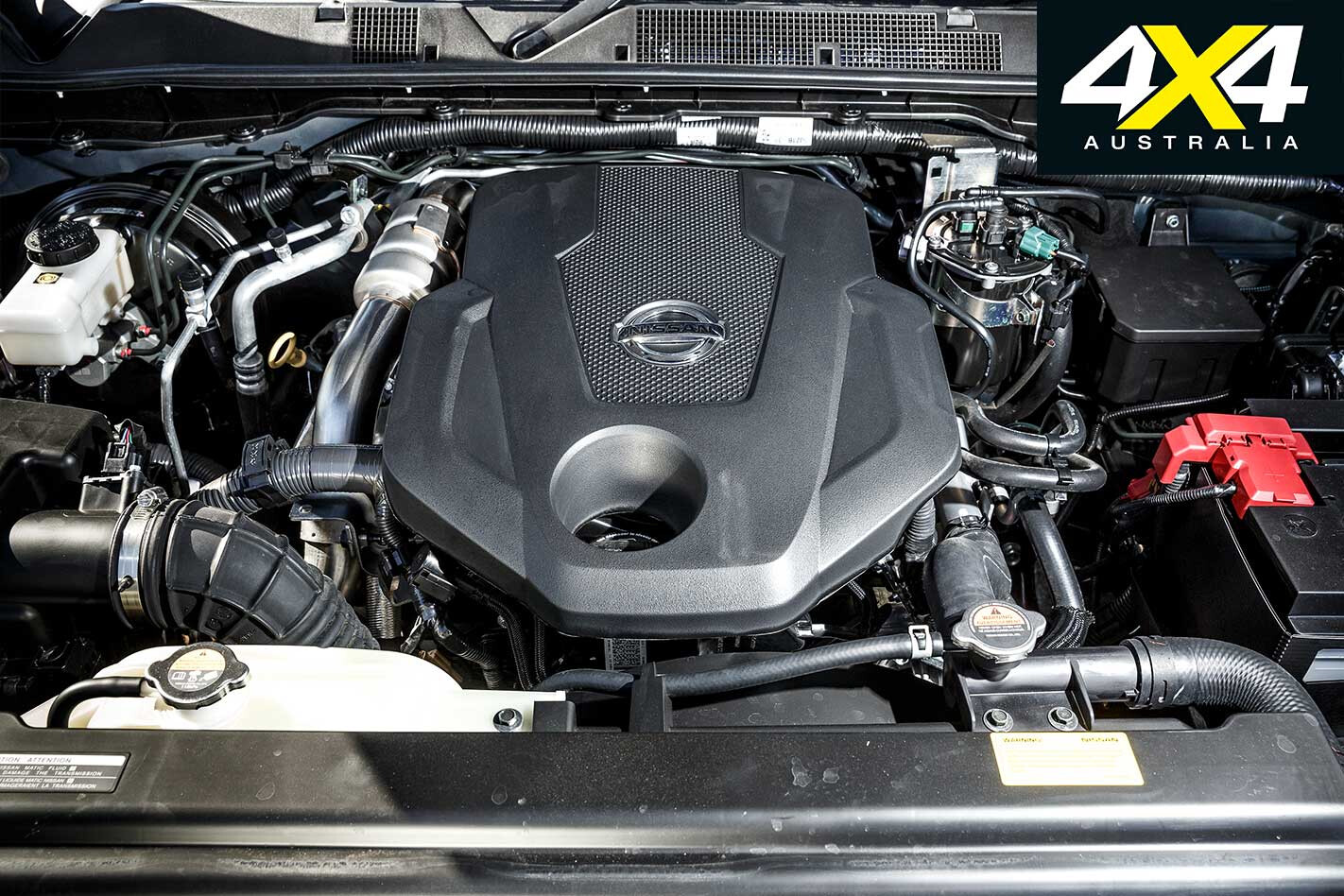
THE Navara’s engine is unique here – well, almost unique, as the same engine is used in the Navara-based Mercedes-Benz X-Class – thanks to having two turbos rather than one. It’s a Renault-sourced engine with a sophisticated bi-turbo arrangement that employs a smaller, quick-spinning turbo for more immediate response off-idle, and then a larger turbo that kicks in to provide the mid-range and top-end punch.
Sequential turbo arrangements like this are commonly used on smaller European diesels (similar to the four-cylinder Amarok, for example) and provide flexibility that comes from having both strong low-rpm torque and good top-end power.
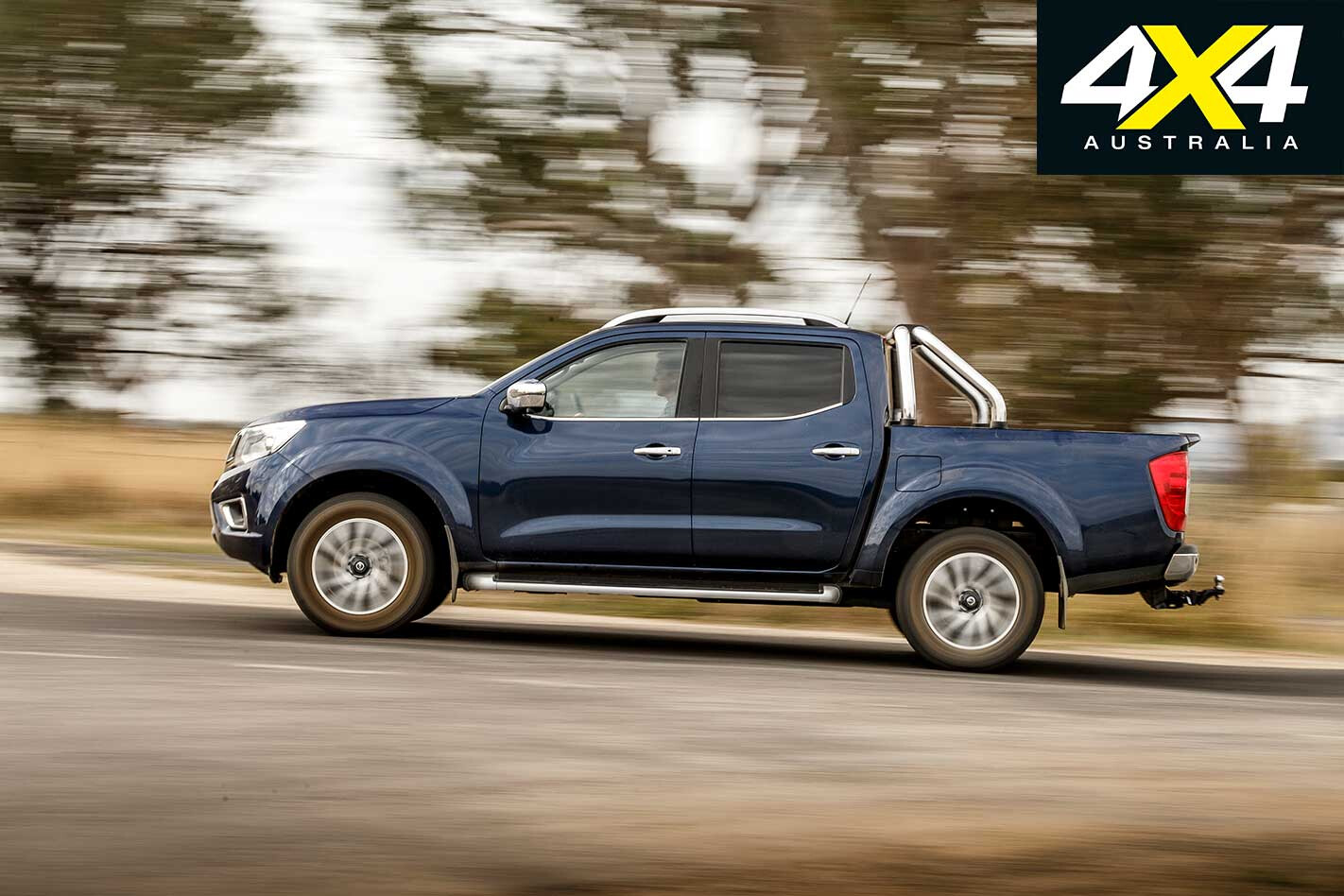
Thanks also to the Navara being one of the lighter utes here and enjoying the benefit of a seven-speed automatic and relatively short overall gearing (55km/h/1000rpm in top), it’s a performance frontrunner, if you ignore the Amarok V6 which is in a league of its own.
The Navara’s 2.3-litre diesel is effortless in general driving and agreeably smooth and quiet, except when pressed hard, where it becomes somewhat noisy. The Navara’s seven-speed automatic offers smooth and slick shifts, but the shift protocols in ‘Drive’ are very much tuned for economy rather than performance.
ON-ROAD RIDE AND HANDLING
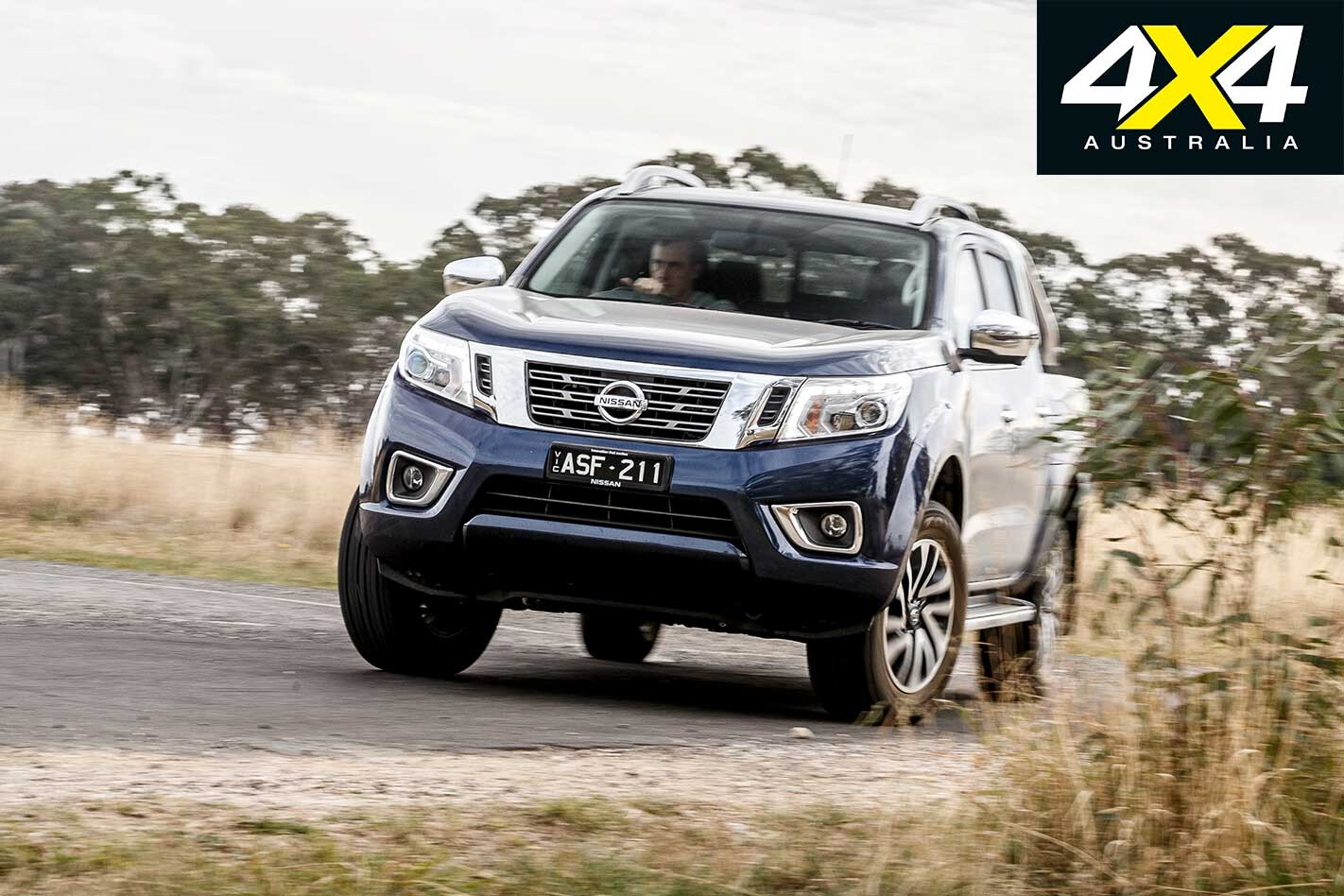
MUCH of the revision work on the MY17 and then the MY18 Navara has centred on the Navara’s heavy load carrying and towing performance (see Load Carrying). It has also addressed the unladen ride and handling and the front-to-rear suspension match, which wasn’t anything special in the original NP300 guise.
In fact, the front-to-rear match was poor (somewhat like the very ordinary D22) and well short of the nicely sorted D40.
Thankfully, the Navara feels much better now suspension-wise, and with the quicker, more responsive steering on the MY18 model, is much more enjoyable to drive, even if the new rear suspension tune means somewhat of a harsh unladen ride.
OFF-ROAD
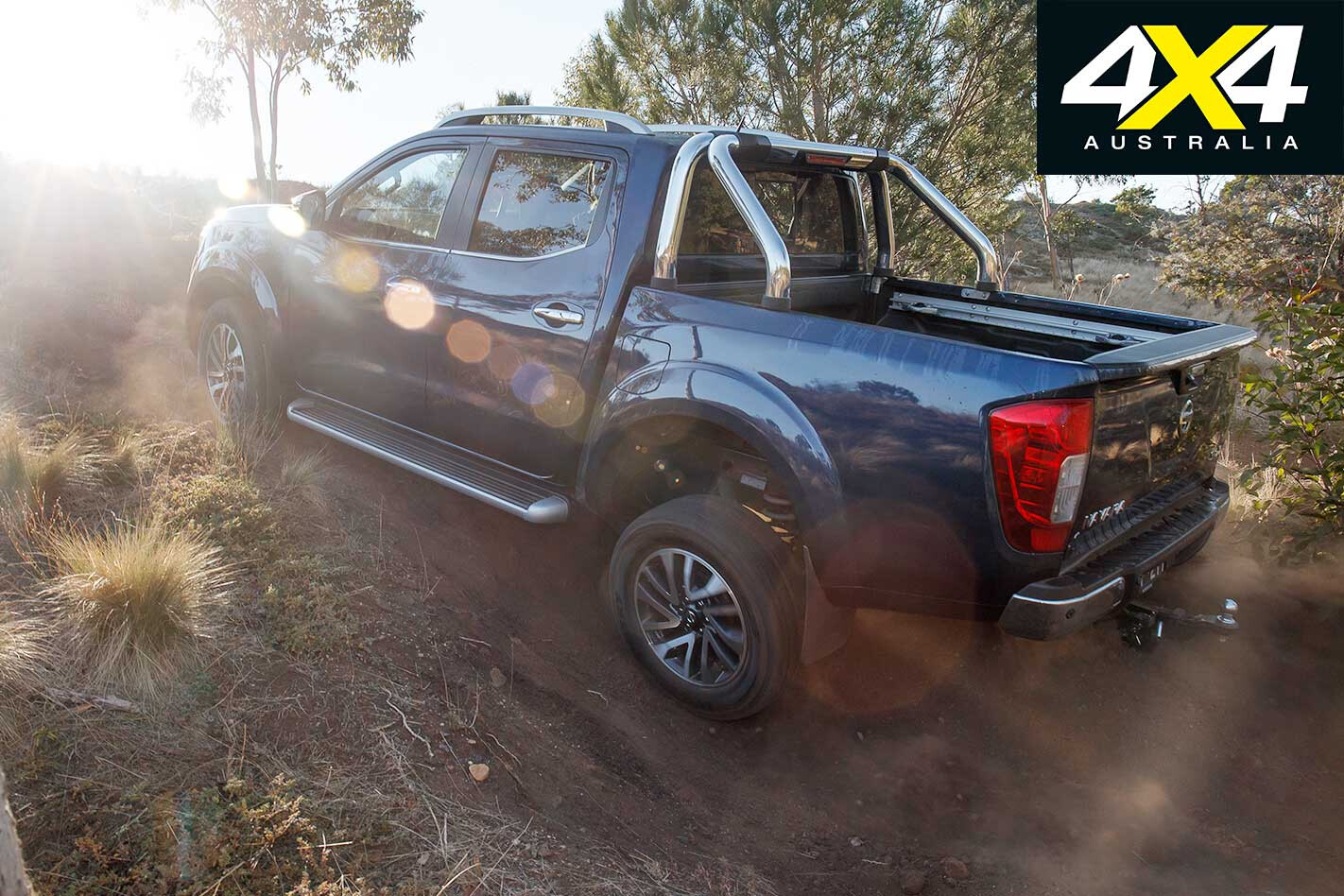
THE Navara has never been particularly capable off-road, as it’s not endowed with much suspension travel (despite the coils at the rear) and is relatively low-slung. ST and ST-X models have a rear locker, and the good news is that when it’s engaged the electronic traction control remains active on the front axle.
The Navara wouldn’t make it up our set-piece hill climb without the rear locker, but it did so with the rear locker engaged. That puts it in front of the Triton and D-Max, even if it did have to work very hard to make the climb.
The Navara is also one of four utes here that doesn’t draw its engine intake air from the inner guard, and it claims the lowest wading depth here of just 450mm. The Navara’s raised bonnet edges also restrict vision.
LOAD CARRYING
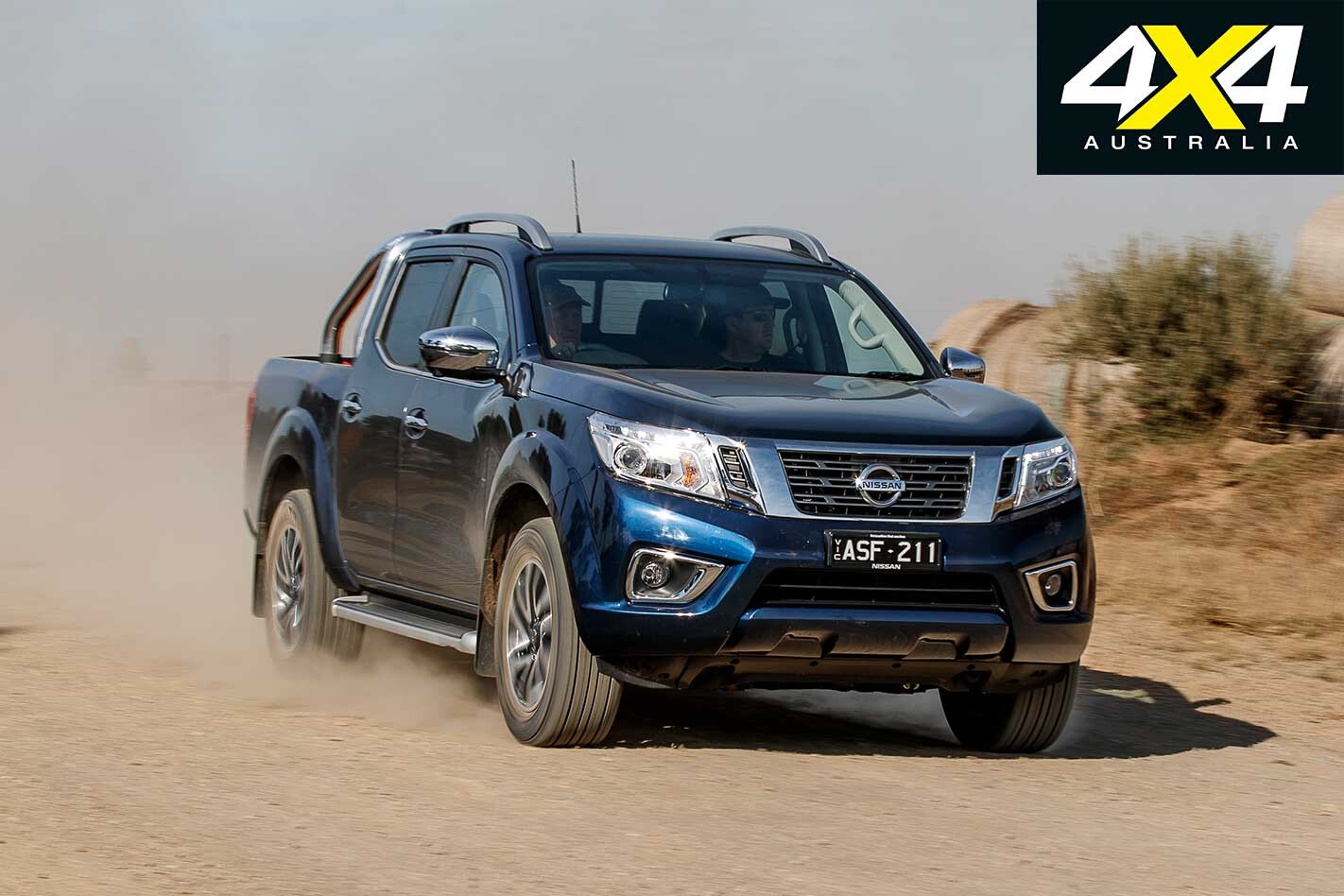
IN ITS original iteration the Navara fared very poorly chassis-wise when towing 3500kg or at maximum payload. In our 2016 Max Load and Tow test it finished at the tail of the field, even if the powertrain coped well enough at the tow and payload limits.
The Series II version did better carrying a maximum payload, with much improved lateral stability, but it still has a nose-up, bum-down attitude on the road. In fact, in this regard, it was no better than before.
With our 900kg payload onboard the MY18 Navara performed better again with acceptable handling and chassis stability. It certainly didn’t drop as much as before at the back; although, overall, the Navara is still short of the best here in terms of the way the chassis carries a heavy load.

More pleasing is the engine performance with a heavy load onboard. You can still feel the engine working a bit harder, and it’s noisy as a result, but the good low-rpm torque and short gearing means it’s not too fussed.
Cargo tie-downs that can be repositioned fore and aft in the rear tub are a handy fitment with the ST-X, but they would be better mounted on the tub floor rather than high on the tub sides.
CABIN AND SAFETY
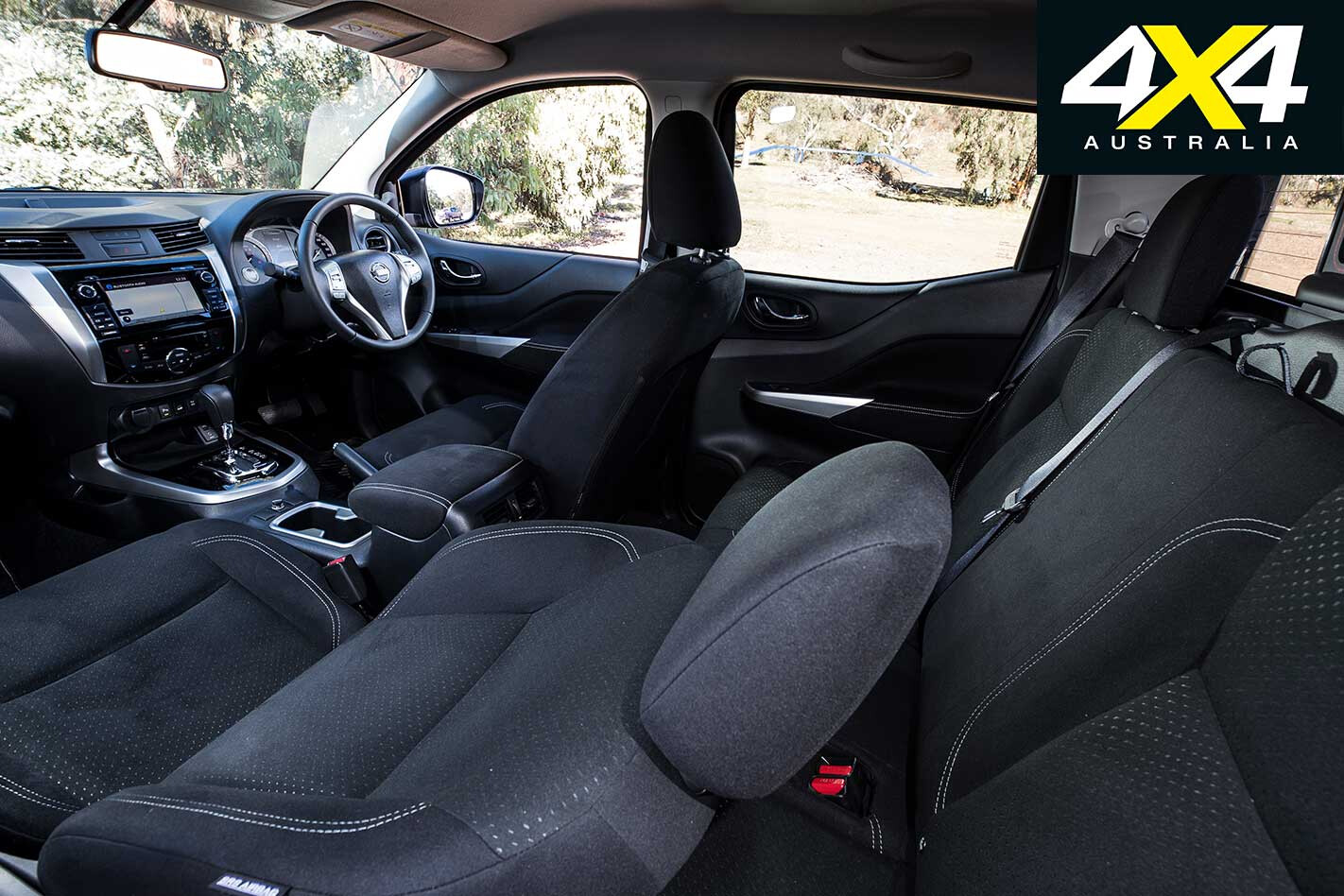
THE Navara has one of the smaller cabins here, so it isn’t the best, especially in terms of rear-seat space for three adults. However, the cabin is nicely finished and has tilt-and-reach steering wheel adjustment. Seven air-bags contribute to the five-star ANCAP safety rating.
There’s plenty of kit at a reasonable price, too, with the ST-X having the option of a sunroof, something unique in this class. A sliding section in the centre of the rear window is a feature unique to the Navara and X-Class.
PRACTICALITIES
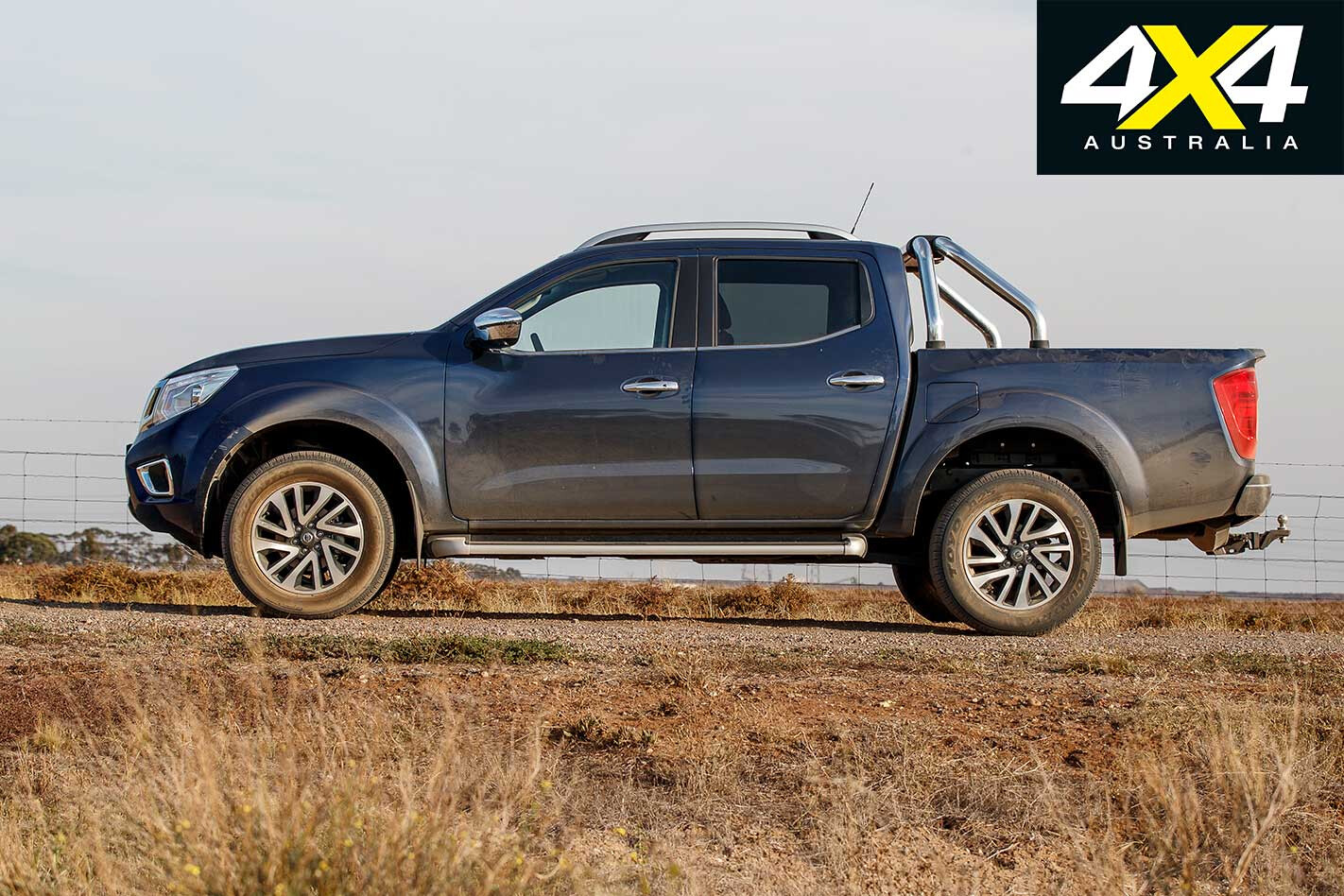
THE Navara offers notably long 12-month/20,000km service intervals and set-price servicing. There’s also a limited range of factory accessories that include steel and aluminium-alloy bullbars; although, the major aftermarket companies provide a greater range of options.
This top-spec Navara rides on 18-inch wheels, but 17s or 16s from lower spec models can be fitted to open up the choice of replacement tyres.
Nissan Navara ST-X Specs Engine: 2.3-litre 4-cyl bi-turbo-diesel Power: 140kW at 3750rpm Torque: 450Nm at 1500-2500rpm Gearbox: 7-speed auto 4X4 system: Dual-range part-time Crawl ratio: 44.6:1 Construction: Separate chassis Front suspension: Independent/coil springs Rear suspension: Live axle/leaf springs Kerb weight: 1980kg GVM: 2910kg Payload: 930kg Towing capacity: 3500kg Towball Download: 300kg GCM: 5910kg Fuel tank size: 80 litres ADR fuel claim: 7.0L/100km Test fuel use: 11.0L/100km Touring range: 677km* *Based on test fuel use, claimed fuel capacity and a 50km ‘safety’ marginAcceleration and Braking 0-100km/h: 9.7sec 80-120km/h: 7.0sec 100-0km/h: 48.7m
Off-road capabilities Departure angle: 26.7˚ Rampover angle: 23.8˚ Approach angle: 32.4˚ Wading depth: 450mm Ground clearance: 228mm
Nissan Navara Prices** SL: $43,900 ST: $47,190 ST-X: $51,990 **Prices do not include on-road costs
The Results
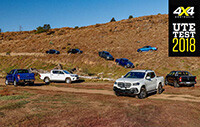 Results and verdict
Results and verdict
Nine utes, but only one winner…
4X4 Australia Ute Mega Test
 Intro & Contenders
Intro & Contenders
Home of 4X4 Australia’s Ute Test, where we have put all of the popular 4×4 dual-cabs through their paces off-road and on-road.

